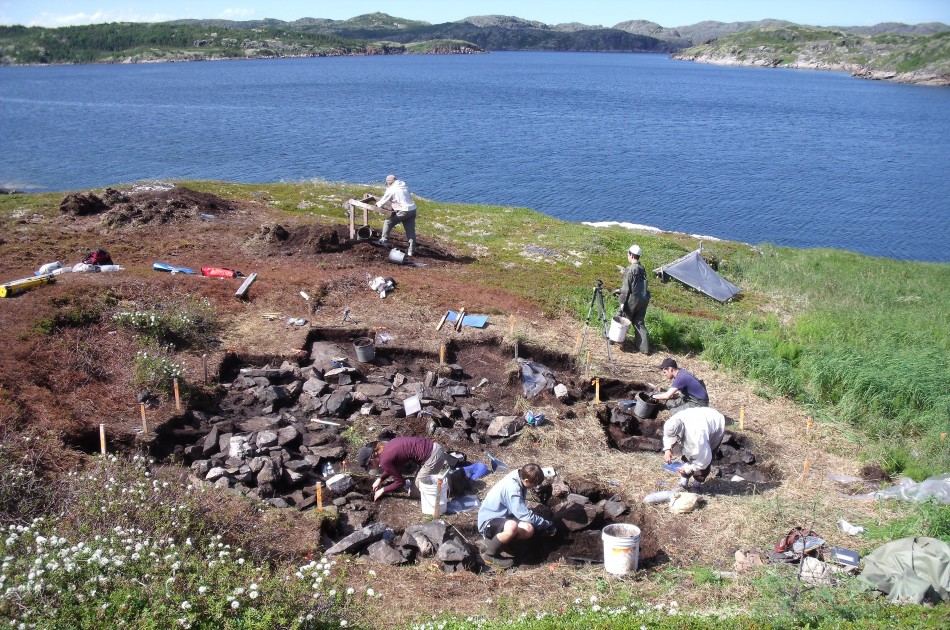![]()
The ceramics shown here were all recovered from a Labrador Inuit sod house in St. Michael’s Bay. They reflect Inuit contact with the French whose fishing vessels plied the waters of the St. Lawrence, la Grande Baye or Strait of Belle Isle, and southern Labrador from the early sixteenth century for cod, seals, walrus, and whales. Such pottery may have come directly to Labrador on vessels from France, or it may have arrived on French fishing ships that had first been supplied at major ports in eastern Canada such as Placentia, Louisbourg, and Quebec City. Found between 2009 and 2012, the ceramic types reveal an unstudied chapter in Labrador Inuit history that predates English colonial presence; they confirm contact with the French at a relatively early date, and illustrate elements of change in Inuit material culture.
The ceramics are predominantly from the Normandy region of France and include stoneware, faience blanche, and faience brune types. Also shown are the remains of two vessels from the Beauvaisis, and a Saintonge jug neck and rim that may represent the early part of the site’s settlement. In this context of many French wares, it was surprising to recover an English salt-glazed stoneware plate or soup bowl with bead and reel rim decoration. This ware type represents the mid-18th century end of the Inuit settlement spectrum in St. Michael’s Bay but falls within the French period. English salt-glazed stoneware was a favourite ware type among the French in the New World, and is found in excavations of early Quebec City, and at 18th century French sites throughout the Maritimes and the American seaboard. The time frame represented by the ceramics ranges from the 1600s to the mid-1700s.
(Scale in all images is 5 cm; Photos by C. Arbour, M. Stopp, and K. Wolfe)
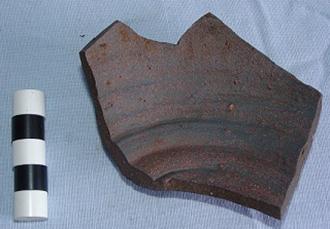 Stoneware vessel base and body section from the Domfront region, Normandy, France. (FeAx-3:222) |
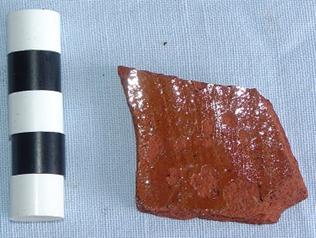 Lead glazed red earthenware body sherd of a thin-walled vessel. (FeAx-3:220) |
 Tin-glazed earthenware cup (outside and interior views) (FeAx-3:151). Normandy blue on white ware faience BUT also resembles Portuguese decorated faianca. 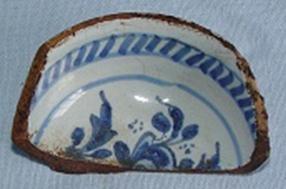 |
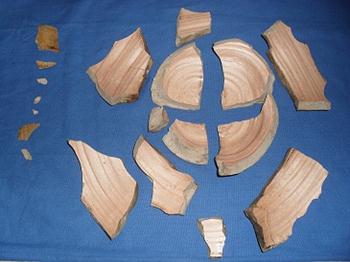 Stoneware jug base from Beauvais region, northern France, found inside one of two cache features within the Inuit sod house. The images show the shard fragments and the reconstructed vessel (Identification courtesy of M. Arcangeli, U of Boston, Mar. 2012). (FeAx-3:286) 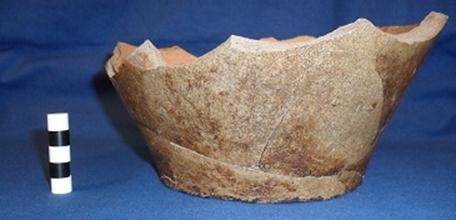 |
Bead and reel decorated salt-glazed stoneware plate or soup bowl. An English ware but widely used in the French colonies of Canada such as at Louisbourg and Place Royale (Quebec City). These shards were all found together in a second stone cache (fragments and repaired views). (FeAx-3:266)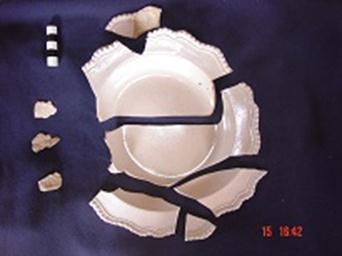 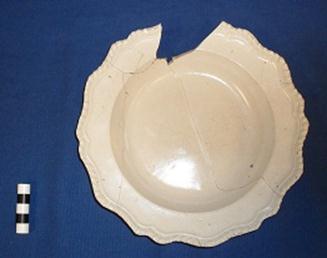 |
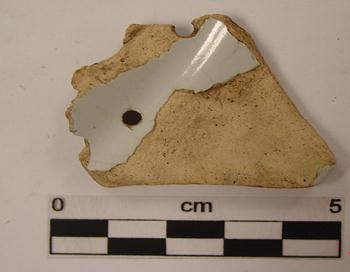 Normandy Plain tin-glazed earthenware with two drilled holes for vessel repair. (FeAx-3:104) |
 Lead-manganese glazed interior surface, probably faience brune pottery. Exterior surface retains no glaze. (FeAx-3:105) |
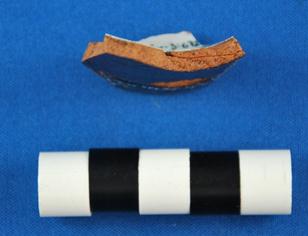 Profile of Normandy faience brune vessel, where glaze has been preserved on both inside and outside surface. White tin-glaze on interior, brown lead-manganese glaze on exterior. (FeAx-3: 672) |
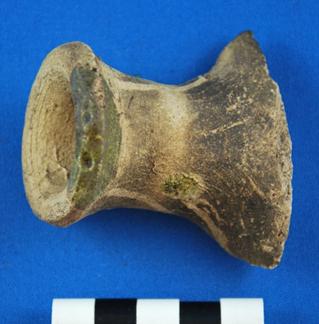 Rim, neck, and shoulder of a spout reminiscent of “gourdes,” or small portable bottles. Body of vessel is not perfectly spherical but appears to be somewhat flattened. Saintonge (Identification courtesy of M. Arcangeli, U. of Boston, Mar. 2012). (FeAx-3:736) Rim, neck, and shoulder of a spout reminiscent of “gourdes,” or small portable bottles. Body of vessel is not perfectly spherical but appears to be somewhat flattened. Saintonge (Identification courtesy of M. Arcangeli, U. of Boston, Mar. 2012). (FeAx-3:736) |
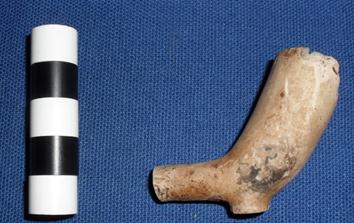 Pipe bowl resembling types dating from ca. 1680-1770 in Hume (1974). (FeAx-3:367)
M. Stopp, The St. Michael’s Bay Archaeology Project and Southern Labrador Inuit Research (2013). |
